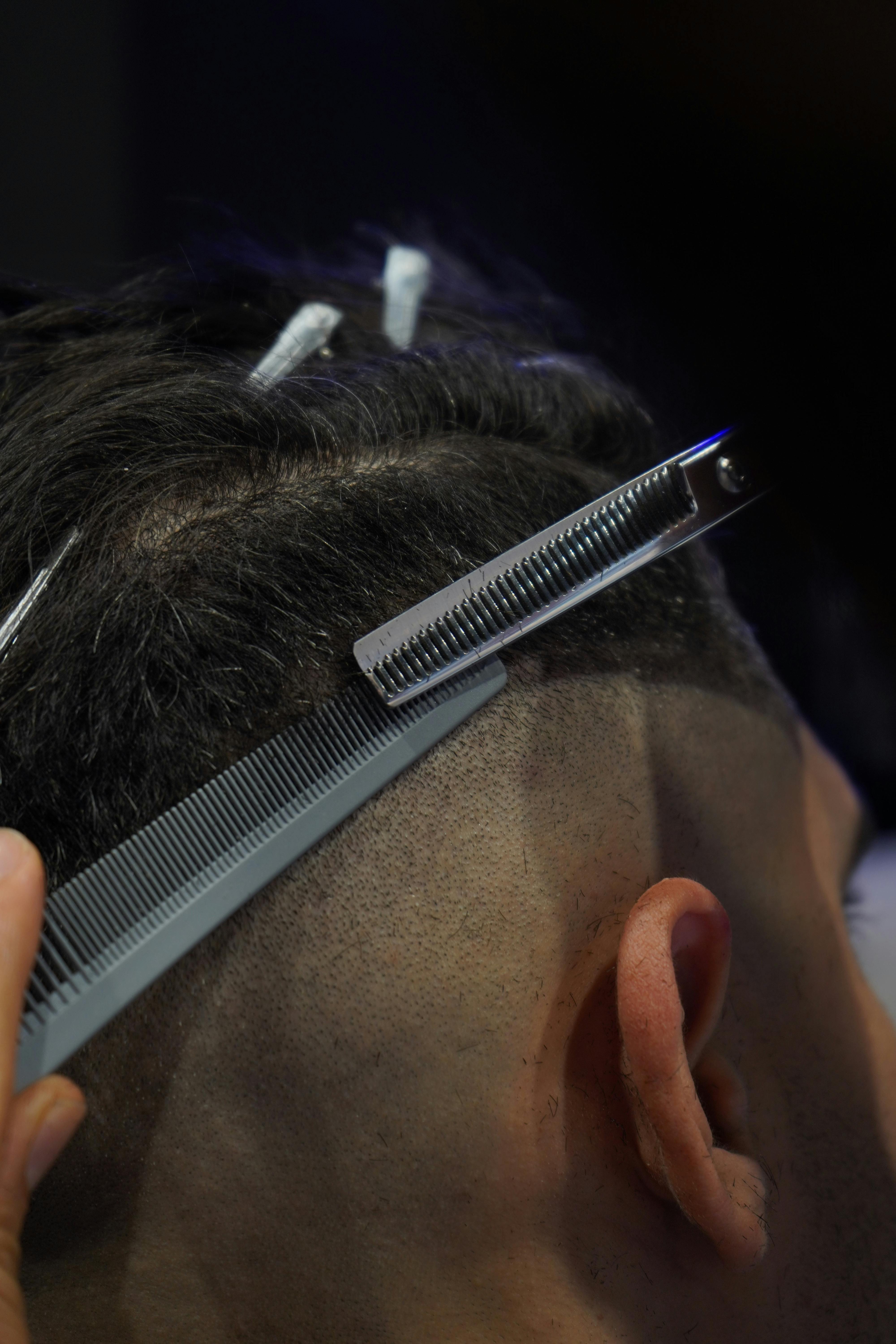
Essential Guide to Using a Ruler for Accurate Measurements in 2025
Understanding how to use a ruler is a fundamental skill that everyone should master, whether for academic purposes, DIY projects, or everyday tasks. In 2025, as we embrace innovative measuring tools and techniques, knowing the proper way to measure with a ruler remains essential. This guide offers a comprehensive overview of ruler measurement techniques, ensuring you achieve accurate measurements consistently.
Hampered by common measuring mistakes or confused by various ruler types? Don’t worry! This article breaks down everything you need to know—from the basics of ruler markings explained to specific techniques for ruler use. We will explore how to measure objects accurately, including helpful tips and tricks for students, artists, and DIY enthusiasts alike.
Each section will build upon the previous one, leading you through best practices and advanced applications of ruler measurements. You'll also find visual aids, like images and links to more resources, to help reinforce your learning experience. By the end of this guide, you will be well-equipped to measure with confidence and precision.
Key takeaways: You'll learn about different types of rulers, steps to use a ruler correctly, measuring methods for various activities, and troubleshooting common ruler problems.

Understanding Ruler Types for Effective Measurements
Before diving into the practical aspects of ruler usage, it's essential to familiarize yourself with the types of rulers available. This knowledge will help you choose the right tool for your specific measuring needs.
Types of Rulers
Rulers come in various types, each serving different functions. Common types include:
- Standard Rulers: Typically made of plastic or wood, these rulers are ideal for general measurements.
- Metal Rulers: Known for their durability, metal rulers are often preferred for woodworking and engineering applications.
- Flexible Rulers: Useful for measuring curves and irregular shapes, they are often used in sewing and crafting.
- Carpenter's Ruler: These feature a folding design and are great for taking larger measurements on job sites.
Understanding these options allows you to select the right ruler for the job, enhancing your overall measuring efficiency.
Common Ruler Measurement Units
Most rulers have markings for both inches and centimeters. Knowing how to read a ruler and understanding these units is vital:
- Inches: Typically used in the United States, markings are often divided into eighths or sixteenths for better precision.
- Centimeters: Widely used in metric systems, centimeters allow for more straightforward decimal calculations.
- Millimeters: Smaller increments than centimeters, beneficial for highly precise measurements.
Being familiar with these units helps you convert measurements easily, especially when accuracy is paramount.
Choosing the Right Ruler for Your Needs
When selecting a ruler, consider the scope of your projects. If you’re a student or engaged in crafts, a flexible plastic ruler may be sufficient. For those doing carpentry or engineering work, a metal ruler might be more appropriate due to its sturdiness.
Don't forget to check the length of the ruler, as this can impact your ability to measure larger items effectively. Having a variety of rulers at your disposal can improve your measuring versatility.
How to Clean and Maintain Your Ruler
Proper care is crucial for maintaining the accuracy of your measurements. Here are some maintenance tips:
- Regularly clean your ruler with a damp cloth to remove dust and residues that can obscure markings.
- Avoid dropping or bending the ruler, as this can lead to inaccurate measurements.
- Store rulers flat in a drawer or designated space to prevent warping.
Taking these simple steps will ensure that your ruler remains in top condition for precise measuring.
Steps to Use a Ruler for Accurate Measurements
Now that you are familiar with ruler types, let’s delve into the proper way to measure with a ruler using easy-to-follow steps.
Positioning the Ruler for Accuracy
The first step in using a ruler correctly involves positioning it accurately. Make sure to:
- Align one end of the ruler with the starting point of your measurement.
- Maintain the ruler flat against the surface of the object to avoid errors.
- Ensure your line of sight is perpendicular to the ruler for more accurate readings.
By observing these positioning tips, you can significantly mitigate measurement errors.
Reading a Ruler: Interpreting Markings
Once your ruler is properly positioned, it’s time to read the measurements:
- Identify the closest whole unit (inch or centimeter) to your measurement point.
- Count any additional smaller markings to get a more precise measurement (e.g., fractions or millimeters).
- Write down the measurement immediately to avoid confusion.
Mastering the art of reading a ruler is crucial for consistent accuracy.
Measuring Straight Lines
Measuring straight lines is a fundamental application of using a ruler. Here's how to do it:
- Place the ruler at the starting point of the line.
- Extend the ruler along the line until you reach the end point.
- Take note of the measurement right at the end of the line.
This technique is essential for creating accurate drawings, cutting materials, or marking measurements for sewing projects.
Measuring Curves and Angles
Using a ruler doesn’t stop at measuring straight lines; you can also measure curves and angles:
- For curves, use a flexible ruler and gently lay it along the curve while taking note of the measurements at regular intervals.
- To measure angles, align the ruler with one leg of the angle and read the corresponding measurement at the vertex.
These techniques broaden your ruler usage beyond standard applications.
Common Mistakes to Avoid When Using a Ruler
Even with the right techniques, common ruler mistakes can lower your measurement accuracy. Some to watch for include:
- Reading a measurement at an angle, which can lead to parallax errors.
- Not aligning the starting point correctly can lead to significant inaccuracies.
- Failing to write down measurements immediately can cause confusion or forgetfulness.
Being aware of these pitfalls helps you adopt better practices when measuring.

Advanced Ruler Measurement Techniques
Once you’ve mastered the basics, you might want to explore more advanced ruler measurement techniques that can refine your skills.
Using a Ruler in Art and Design
Rulers have significant applications in art and design, particularly for achieving symmetry and proportionality:
- Utilize a ruler when sketching out layouts to ensure characters, objects, or backgrounds align perfectly.
- For designs involving repeating patterns, precise measurements ensure uniformity across all features.
Exploring these applications enriches your creative projects with professional precision.
Ruler Measurement for DIY Projects
Many DIY projects, from crafting to home improvement, hinge on accurate measurements:
- When cutting wood or fabric, a ruler helps ensure that your pieces fit together seamlessly.
- Utilizing a ruler when marking measurements prevents costly mistakes.
This skill not only saves time but also enhances the quality of your DIY outcomes.
Measuring with a Flexible Ruler
When working with non-linear surfaces such as curves or angles, a flexible ruler becomes the perfect tool:
- Lay the flexible ruler along the edge of the curvature you are measuring.
- Make note of the measurements at several points for more accurate data.
These techniques will elevate your measuring skills and improve your project execution.
Converting Measurements with a Ruler
In many situations, it’s useful to know how to convert measurements from one unit to another. Here’s how to efficiently perform these conversions:
- Familiarize yourself with common conversion factors (e.g., 1 inch = 2.54 centimeters).
- Use a ruler that also displays both measurements for on-the-spot conversions.
Mastering conversions makes you a more versatile measurer, adaptable to different project specifications.
Utilizing Technology and Ruler Measurement Apps
With advancements in technology, ruler measurement apps are becoming increasingly popular:
- Such apps allow for quick, convenient measurements, especially on the go.
- Many provide features for unit conversion and precise measurement tracking.
Integrating these technological tools broadens your measurement capabilities.
Ruler Measurement in Educational Settings
Educators are finding creative ways to incorporate rulers into their teaching practices. Understanding how to use a ruler effectively can enhance student learning experiences.
Hands-On Learning with Rulers
Implementing hands-on activities during lessons can significantly aid in learning. Here are some practical applications:
- Incorporate measuring challenges to encourage critical thinking and teamwork among students.
- Use rulers to teach concepts such as geometry and spatial awareness, reinforcing foundational skills.
Engaging students with interactive ruler tasks cultivates a deeper understanding of measurement.
Ruler Challenges for Students
Set up ruler challenges that encourage students to measure common objects accurately. This practice not only solidifies their skills but also makes learning fun.
For added complexity, have them convert measurements from one unit to another, enhancing their problem-solving capabilities.
Ruler Use in Geometry
In geometry, rulers are essential for creating accurate diagrams and learning measurement concepts:
- Teach students how to draw various geometric shapes, ensuring they utilize the ruler for precision.
- Incorporate lessons on angles and their measurement, using rulers to align and measure accurately.
By applying rulers in geometry lessons, students should grasp the relevance of measurement in real-world situations.
Incorporating Rulers in Group Projects
Encourage collaboration through group projects where students must measure items accurately together:
- This fosters communication as they discuss measurements and problem-solving methods.
- Group projects help reinforce measurement skills and boost confidence when using rulers.
Through these collaborative endeavors, students can share techniques and learn from each other.
Q&A: Common Questions About Using a Ruler
How can I improve my measuring accuracy with a ruler?
The key to improving your measuring accuracy is consistent practice. Make sure you regularly review how to read a ruler accurately, maintain the ruler’s positioning, and note measurements promptly. Additionally, you might consider using digital apps as supplementary tools.
What are some common mistakes people make when measuring with a ruler?
Some prevalent mistakes include not aligning the ruler properly, reading from an angle, and failing to keep a flat surface when measuring. Always ensure your line of sight is perpendicular to avoid parallax errors.
How do I convert measurements accurately using a ruler?
Converting measurements can be straightforward. Familiarize yourself with common conversion factors, and if possible, use a ruler with both metric and imperial markings for convenience.
Can I use a ruler for measuring curves?
Yes, a flexible ruler is specifically designed for measuring curves. Lay the ruler along the curve or bend it to match the shape and take measurements at critical points.
What types of projects can I use a ruler for?
Rulers are versatile tools used in various projects, including crafts, woodworking, sewing, and DIY home improvements. They are also essential in educational settings for teaching measurement concepts.